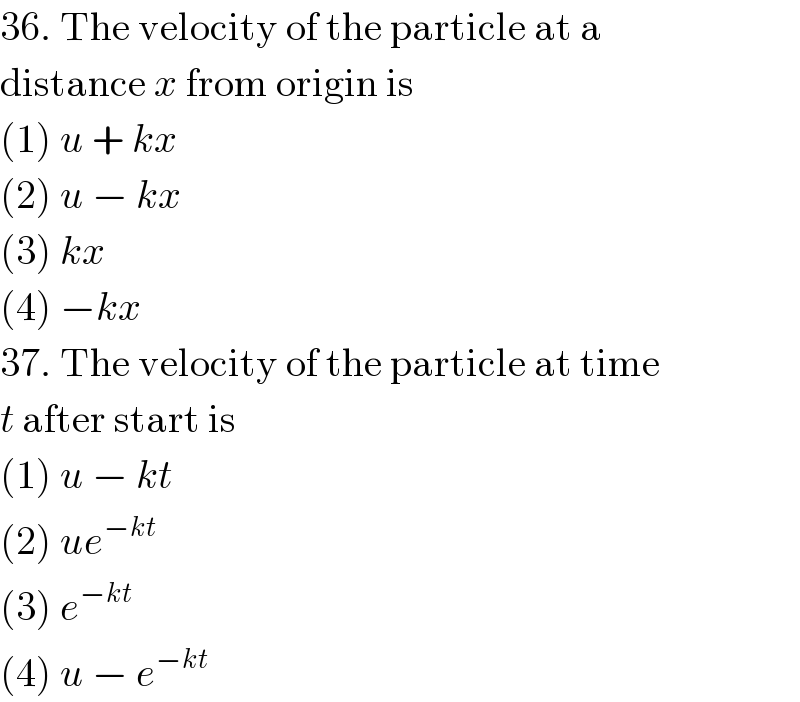
Question and Answers Forum
Question Number 13563 by Tinkutara last updated on 21/May/17

Commented by Tinkutara last updated on 21/May/17

Commented by Tinkutara last updated on 21/May/17

Commented by Tinkutara last updated on 21/May/17

Answered by ajfour last updated on 21/May/17
![(36). a=−kv v(dv/dx)=−kv ∫_u ^( v) dv=−k∫_0 ^( x) dx v−u=−kx v=u−kx [option (2)] .....(i) (37). a=−kv (dv/dt)=−kv ∫^( v) _( u) (dv/v)=−k∫_0 ^( t) dt ln ((v/u))=−kt v=ue^(−kt) [option (2) ] (38). a=−kv =−k(u−kx) ..from (i) if k>0 , u>0 at t=0, a=−ku a=0 at x=(u/k) so a-x graph is linear with negative a intercept and positive x-intercept. [option (3) ] .](Q13567.png)
Commented by Tinkutara last updated on 21/May/17

Commented by ajfour last updated on 21/May/17
![the case is of initial speed u in a certain direction, that i may take to be the positive direction; so u>0 what i meant that if u>0 and k>0 both then object′s velocity goes decreasing, but is always positive and reaches zero in infinite time ; the position coordinate goes near and near its upper limit of x= (u/k), because integrating velocity x=∫_0 ^( t) vdt=u∫_0 ^( t) e^(−kt) dt =u[(e^(−kt) /(−k))]_(t=0) ^(t=t) =(u/k)(1−e^(−kt) ) as t→∞ , x→(u/k) .](Q13571.png)
Commented by Tinkutara last updated on 22/May/17

